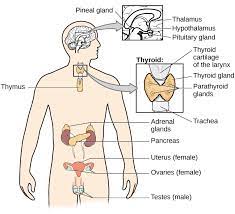How does chemical coordination take place in animals?
In animals, chemical coordination is primarily achieved through hormones, which are chemical messengers produced by endocrine glands. These glands secrete hormones into the bloodstream, where they travel throughout the body and affect specific target organs. Hormones regulate various functions, including growth, development, metabolism, and behavior.
Here’s a more detailed look at how chemical coordination works:
1. Hormone Production:
Endocrine glands, such as the pituitary gland, thyroid gland, and adrenal glands, produce and secrete hormones.
2. Circulation:
Hormones are released into the bloodstream and carried throughout the body.
3. Target Organs:
Hormones travel to specific target organs or tissues that have receptors for those hormones.
4. Effect on Target Organs:
Hormones bind to their receptors on target cells, triggering a specific physiological response.
5. Regulation:
Hormone levels are tightly regulated through feedback mechanisms, ensuring that hormone actions are appropriate for the body’s needs.
For example, the thyroid gland produces thyroid hormones, which regulate metabolism. When thyroid hormone levels are low, the hypothalamus and pituitary gland release hormones that stimulate the thyroid gland to produce more thyroid hormone. This is an example of a negative feedback loop, where a change in hormone levels triggers a response to restore those levels.
